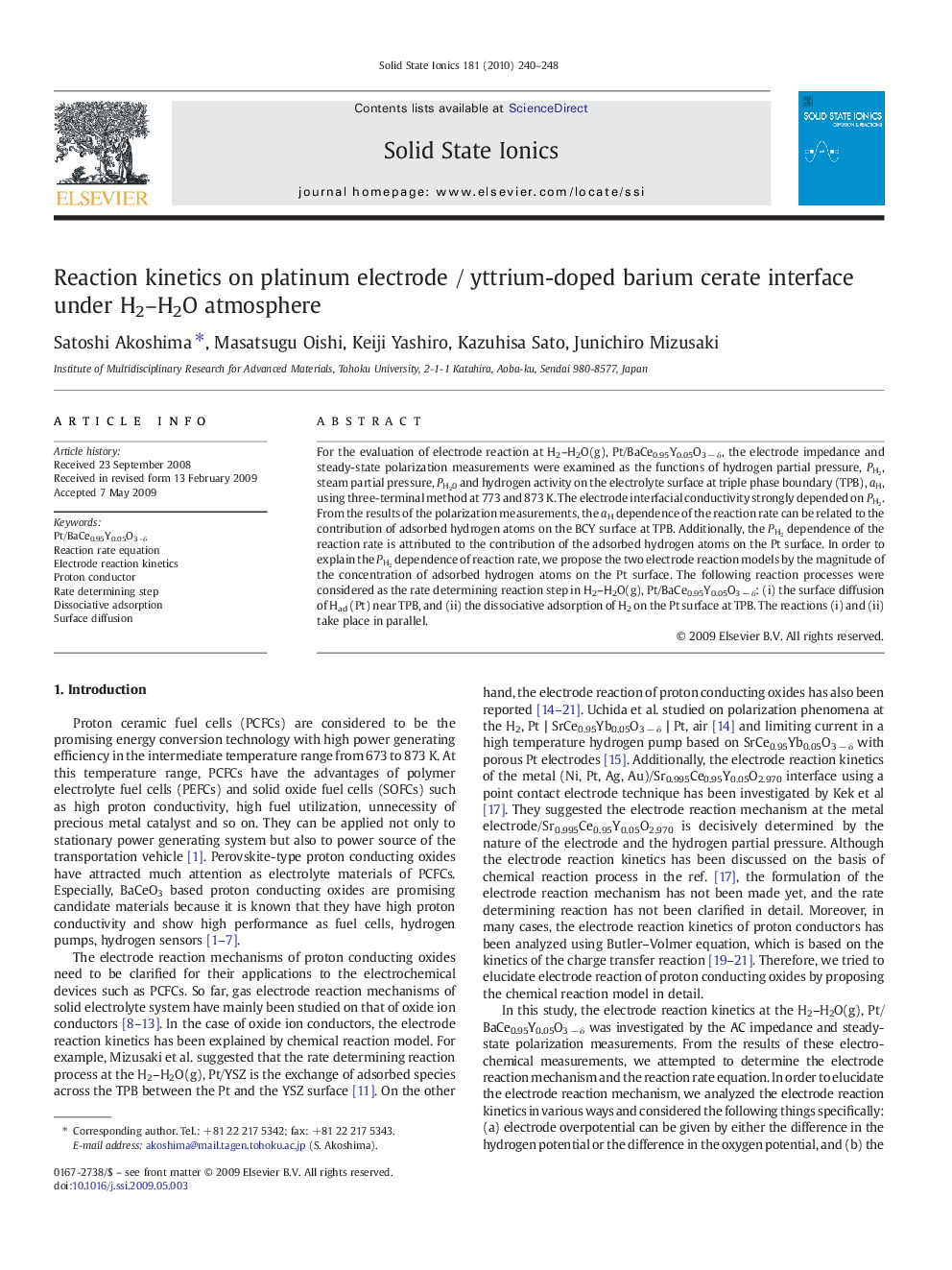| Article ID | Journal | Published Year | Pages | File Type |
|---|---|---|---|---|
| 1296757 | Solid State Ionics | 2010 | 9 Pages |
For the evaluation of electrode reaction at H2–H2O(g), Pt/BaCe0.95Y0.05O3 − δ, the electrode impedance and steady-state polarization measurements were examined as the functions of hydrogen partial pressure, PH2, steam partial pressure, PH20 and hydrogen activity on the electrolyte surface at triple phase boundary (TPB), aH, using three-terminal method at 773 and 873 K. The electrode interfacial conductivity strongly depended on PH2. From the results of the polarization measurements, the aH dependence of the reaction rate can be related to the contribution of adsorbed hydrogen atoms on the BCY surface at TPB. Additionally, the PH2 dependence of the reaction rate is attributed to the contribution of the adsorbed hydrogen atoms on the Pt surface. In order to explain the PH2 dependence of reaction rate, we propose the two electrode reaction models by the magnitude of the concentration of adsorbed hydrogen atoms on the Pt surface. The following reaction processes were considered as the rate determining reaction step in H2–H2O(g), Pt/BaCe0.95Y0.05O3 − δ: (i) the surface diffusion of Had (Pt) near TPB, and (ii) the dissociative adsorption of H2 on the Pt surface at TPB. The reactions (i) and (ii) take place in parallel.
